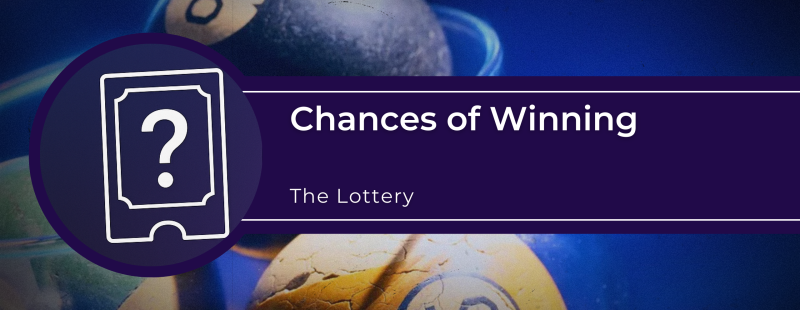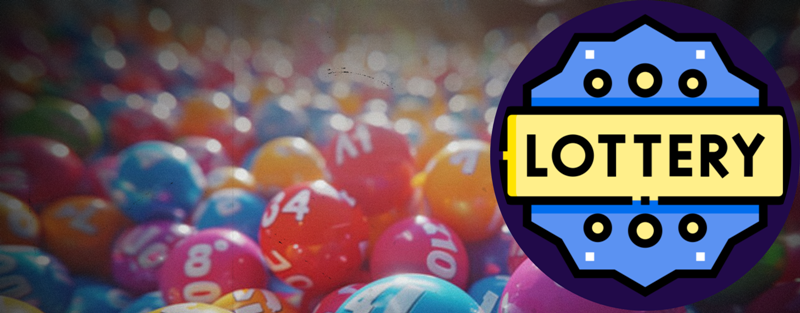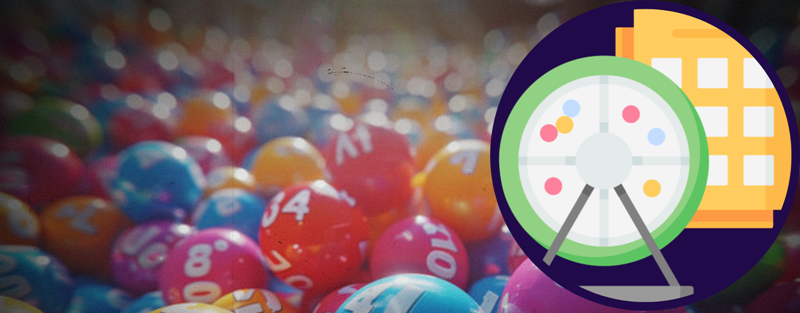
People buy lottery tickets, dreaming of becoming rich overnight. But the chances of winning are super tiny, like 1 in 300 million for big ones like Powerball! In this article, we’ll break it down in simple terms – what the real odds are, and why it’s mostly luck.
Understanding Lottery Odds: A Statistical Overview
When you purchase a lottery ticket, you’re essentially buying a chance (a slim one at that) at winning a prize.
The fundamental concept is straightforward: You pick numbers and a lottery machine picks numbers. If they match – jackpot!
However, the details become considerably more complex when you consider the various lottery formats, number ranges, and additional features like bonus balls.
So, the reality is this:
- Odds are extremely low (like 1 in crores).
- Different lotteries – different number combos.
- Some have bonus balls (like PowerBall) – makes winning even harder!
The Basics of Lottery Probability
At its core, lottery probability follows the principles of combinatorial mathematics.
The odds of winning depend on how many numbers you need to match from a specific range of numbers.
For instance, in a typical “6 from 49” lottery format, players must correctly select all six numbers drawn from a pool of 49 possibilities. The probability formula for this scenario is calculated using combinations, specifically:
1 ÷ (49 choose 6) = 1 ÷ 13,983,816
This means your chance of winning the jackpot is approximately 1 in 14 million-a minuscule 0.0000000715 probability.
Common Lottery Formats and Their Odds
Different lotteries employ various formats that dramatically affect your winning chances. Some common formats include:
| Format | How It Works | Jackpot Odds |
|---|---|---|
| 6/49 (Classic) | Pick 6 from 49 | 1 in 14 million |
| 5/90 (Europe style) | Pick 5 from 90 | 1 in 44 million |
| Powerball (USA) | 5 from 69 + 1 from 26 | 1 in 292 million |
| Pick-3 (Small Games) | 3 digits in exact order | 1 in 1,000 (better odds) |
The addition of bonus balls, multipliers, or extra numbers dramatically reduces winning odds while enabling lottery operators to offer more substantial jackpots and secondary prizes.
This balance between winning probability and potential reward represents the fundamental trade-off that keeps lotteries commercially viable and enticing to players.
🤯 Fun Fact:
You’re more likely to be hit by lightning ⚡ (multiple times!) than win the jackpot.

Real-Life Lottery Odds: Examples and Comparisons
Understanding abstract probabilities can be challenging.
Let’s examine specific real-world lotteries and compare their odds to make these numbers more tangible.
Major International Lotteries
| Lottery | Odds to Win Jackpot | Quick Take |
|---|---|---|
| Powerball (USA) | 1 in 292 crore+ | Insane jackpot, but near impossible odds |
| EuroMillions | 1 in 139 crore+ | Better than Powerball, still very tough |
| El Gordo (Spain) | 1 in 1 lakh | More winners, smaller share – like a raffle |
National Lotteries in India
| Lottery | Odds | What’s the deal? |
|---|---|---|
| Playwin (6/49) | 1 in 1.4 crore | Classic style, jackpot tough to hit |
| Playwin (6/90) | Way tougher | Harder combo – even worse odds |
| Kerala State Lottery | ~1 in 1 crore | Better than foreign ones, but still tough |
| Jaldi 5 (5/40) | 1 in 6.5 lakh | Smaller prize, better odds, more chances |
Winning big is like finding a needle in a haystack, bhai. International lotteries – almost impossible, Indian lotteries – slightly better, but still mostly luck.
So, play for fun, not for future planning.
The infographic below visually compares the odds of winning the lottery with other real-life events – making it clear just how rare hitting that jackpot truly is.
Comparing Lottery Odds to Everyday Events
To truly grasp how unlikely winning the lottery is, consider these comparative probabilities:
- Odds of being struck by lightning in your lifetime: 1 in 15,300
- Odds of dying in a car accident: 1 in 107
- Odds of becoming a movie star: 1 in 1,505,000
- Odds of becoming US president: 1 in 10,000,000
- Odds of being dealt a royal flush in poker: 1 in 649,740
Comparing these statistics reveals the truly extraordinary improbability of hitting a major lottery jackpot.
For perspective, you’re approximately 20,000 times more likely to be struck by lightning than win the US Powerball jackpot.
Even becoming president of the United States is statistically more likely than winning some major lotteries.
The Mathematics Behind Lottery Odds
The seemingly simple lottery draw involves complex mathematical principles.
Combinatorics and Probability Theory
Lottery odds calculations rely on combinatorics-a branch of mathematics concerned with counting, arrangement, and combination. The fundamental calculation uses the combination formula:
C(n,r) = n! / [r!(n-r)!]
Where:
- n – total numbers
- r – numbers you pick
- ! factorial (like 5! = 5×4×3×2×1)
Example: 6/49 Lottery
Total combos = C(49, 6) = 13,983,816 (nearly 14 million possible combinations)
It means: You’ve got 1 in 1.4 crore chance to win. Only 1 combo wins.
For lotteries with additional balls like Powerball, we multiply the odds for each independent event.
Example: Powerball (5/69 + 1/26)
Combos = 11.2 million × 26 = 292 million.
This multiplication explains why adding just one extra ball or expanding the number range dramatically reduces winning chances.

Tools for Calculating Lottery Odds
Online Lottery Odds Calculators
Several online tools can calculate your specific lottery odds without requiring mathematical expertise:
- LotteryCodex.com offers comprehensive calculators for major lotteries worldwide
- WebMath.com provides step-by-step probability explanations
- TheBalance.com features lottery-specific calculation tools
These calculators allow you to input your lottery’s specific format and instantly see your odds for various prize levels, from jackpots down to minor prizes.
Manual Calculation Methods: How to Manually Calculate Lottery Odds
For those interested in understanding the math directly, here’s a simplified approach:
- Identify your lottery’s format (e.g. 6 out of 49 numbers = 6/49)
- Calculate the total possible combinations using the combination formula
C(n, r) = n! / [r!(n–r)!] - For smaller prizes, calculate the odds of matching specific subsets of numbers
C(6,5) × C(43,1) / C(49,6) = 258 / 13,983,816 ≈ 1 in 54,201 - For lotteries with additional balls or features, multiply the chances for each part!
This approach reveals why lower-tier prizes have much better odds, though they’re still highly improbable compared to everyday chance events.
Strategies and Misconceptions
Despite the clear mathematical reality of lottery odds, numerous myths and misconceptions persist about how to improve your chances.
Common Myths About Increasing Lottery Odds
| ✅ Reality | ✅ Reality |
|---|---|
| “This number is due!” | The lottery is random. Each draw – new game. No number is “due,” bhai. |
| “Same number every week – better odds” | Nahi! Odds don’t improve over time – every draw is separate. |
| “Use birthdays or patterns – win chance” | Nope. It doesn’t help. But odd combos may avoid splitting the prize. |
| “Hot/cold numbers help” | All numbers have an equal chance.Patterns – illusion. |
Responsible Lottery Participation
- Entertainment only. Buy a ticket like you’d buy popcorn — don’t plan your future on it. 🍿
- Set a budget. Only spend what you’re chill to lose. Don’t go broke chasing jackpots.
- Try a lottery pool. Chip in with friends, share winnings. But bro, get it in writing! ✍️
- Big jackpots? Maybe okay. When prize money is huge, the ticket’s “value” is closer to worth it – thoda math works.
- Never chase losses. Lost today? Cool, move on. Doubling tickets = doubling regret. 🚫
Latest Lottery Technology and Trends
The lottery industry continues evolving with technological advancements and changing consumer preferences. Understanding these developments provides context for the modern lottery landscape.
Digital Transformation in Lotteries
Online lottery platforms have revolutionized accessibility, allowing players to purchase tickets via websites and mobile apps. This digital transformation has introduced features like automatic number selection, subscription services, and instant win notification.
No risk of losing your ticket – it’s saved digitally and safely.
Some places use blockchain to make results 100% fair and transparent. This innovation addresses long-standing concerns about lottery integrity and provides immutable records of all transactions and results.
Responsible Gaming Initiatives
Modern lotteries increasingly emphasize responsible gaming practices. Many operators now incorporate:
- Self-exclusion programs
- Spending limits for online accounts
- Educational resources about odds and probability
- Problem gambling support information
These measures reflect growing recognition that despite their recreational nature, lotteries represent a form of gambling that requires appropriate consumer protections and transparency.